Christmas Eve
nx-christmaseve2023 from mark fletcher on Vimeo.
Online shoppers tend to be savvy, and vocal if things go wrong. Being on the front foot with communication is key. This story was viral online well before A Current Affair picked it up. Now, on social media since the ACA story, the pile-on has surged.
While their comms could have been better and their back-office more organised, plenty of responses go too far.
In the last two weeks our own online businesses have shipped thousands of orders with half of those sent Express Post because of a supplier screw up that saw product arrive late.
Check out this video from Twitter a few days ago showing magazines featuring Doctor Who and (5) TV related titles in a UK newsagent.
doctor who spotting in the newsagents pic.twitter.com/UBoUNgHhcK
— Hol 🏴☠️💖🌈 Jimchie era ⚔️ (@honeysweethol) December 13, 2023
I’m not pining for change. Rather, the difference fascinates me. I think it reflects a different relationship with print over all.
Several lottery retailers have contacted me to discuss this. The thing is, we won’t know until the day.
Boxing Day sales are bigger in some states than others.
In locations where it is a big sales event, lottery customers may impact store traffic and this could dampen sales results.
In locations there Boxing Day sales are not a thing, the jackpot presents an opportunity.
If I had lotteries and was running a Boxing Day sale I’d prepare the shop layout and register placement such that any lottery traffic bounce did not hurt hoped-for Boxing Day sales.
I’d also try and leverage each opportunity for the other.
Lottery jackpots are a terrific boost sales, but unwelcome when they hinder better margin business.
A Boxing Day sale has more opportunity for return business that a lottery jackpot I think.
It’s terrific seeing Gen Z and Millennials buying Christmas cards. Their preference from what I’ve seen is humour and relevance to what interests them.
Outside of the regular card department we have around 60 Christmas cards and ornaments selected to appeal to them. We have them situated so they can be easily seen from outside the shop, on the street – we do this to attract them inside.
While not for everyone’s taste, it’s important we play outside tradition if we want to reach more shoppers and, after all, we are not our own customers.
Here are some of the cards from this range.
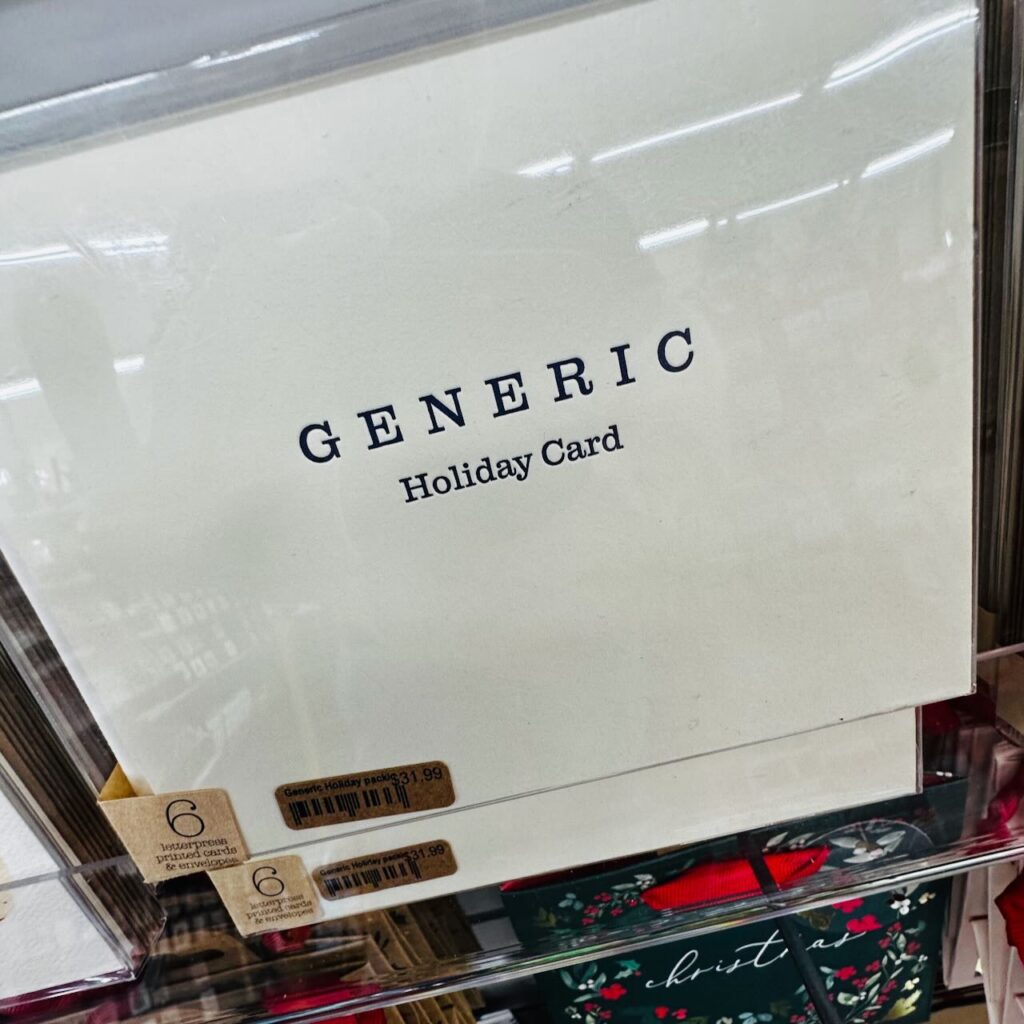


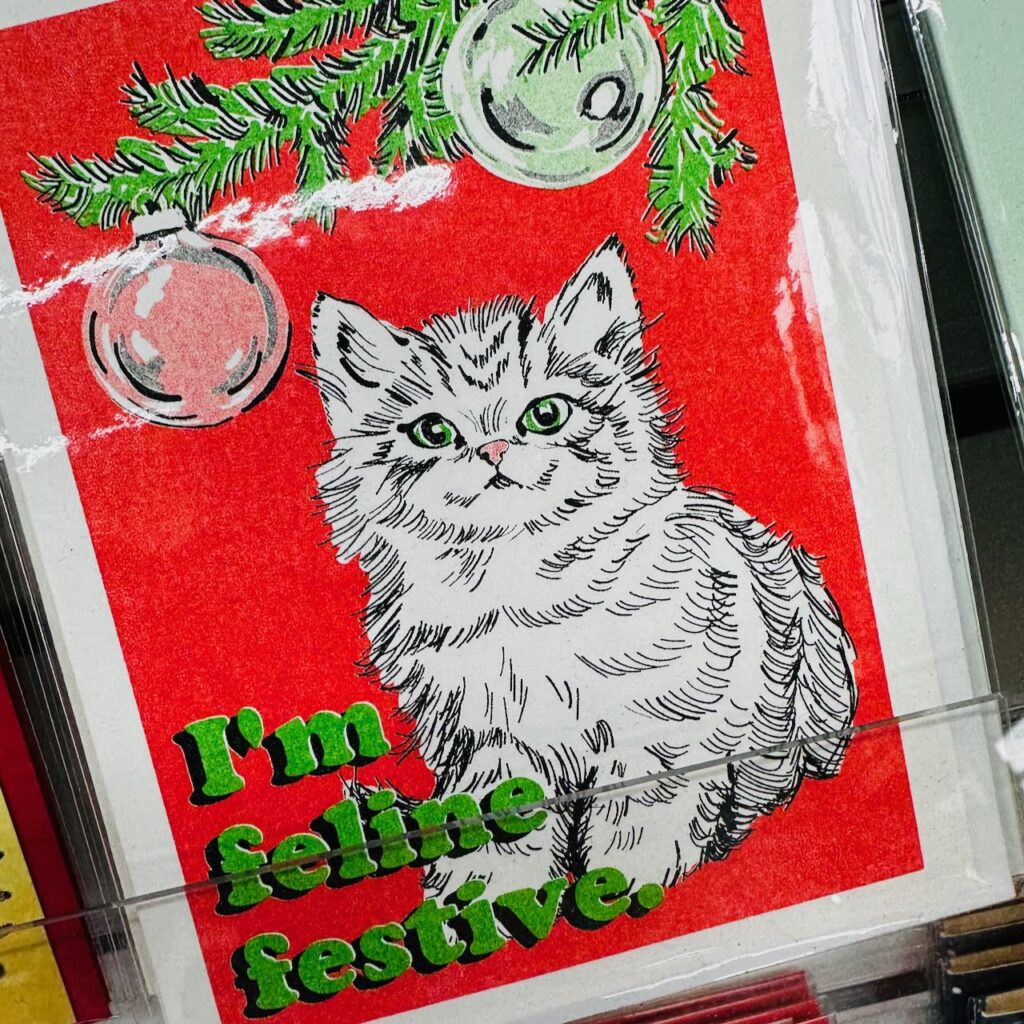

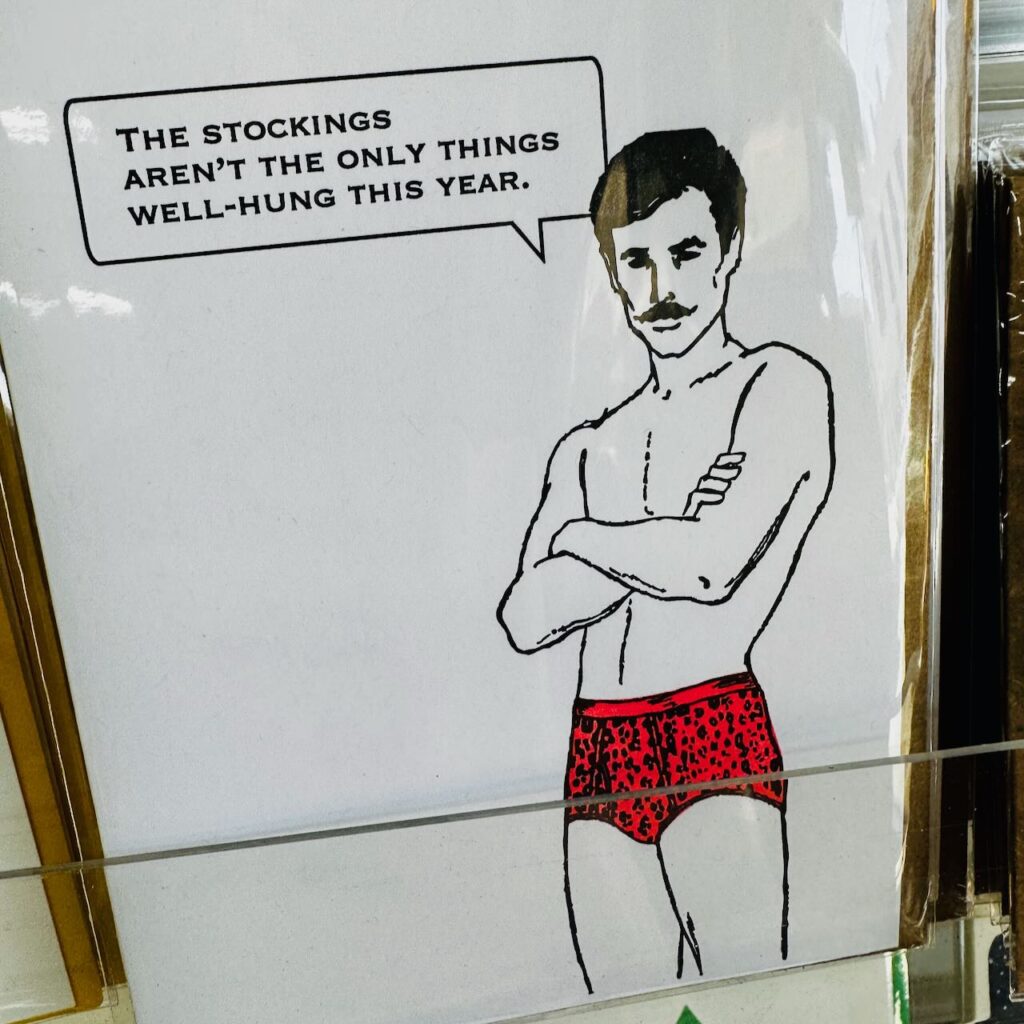
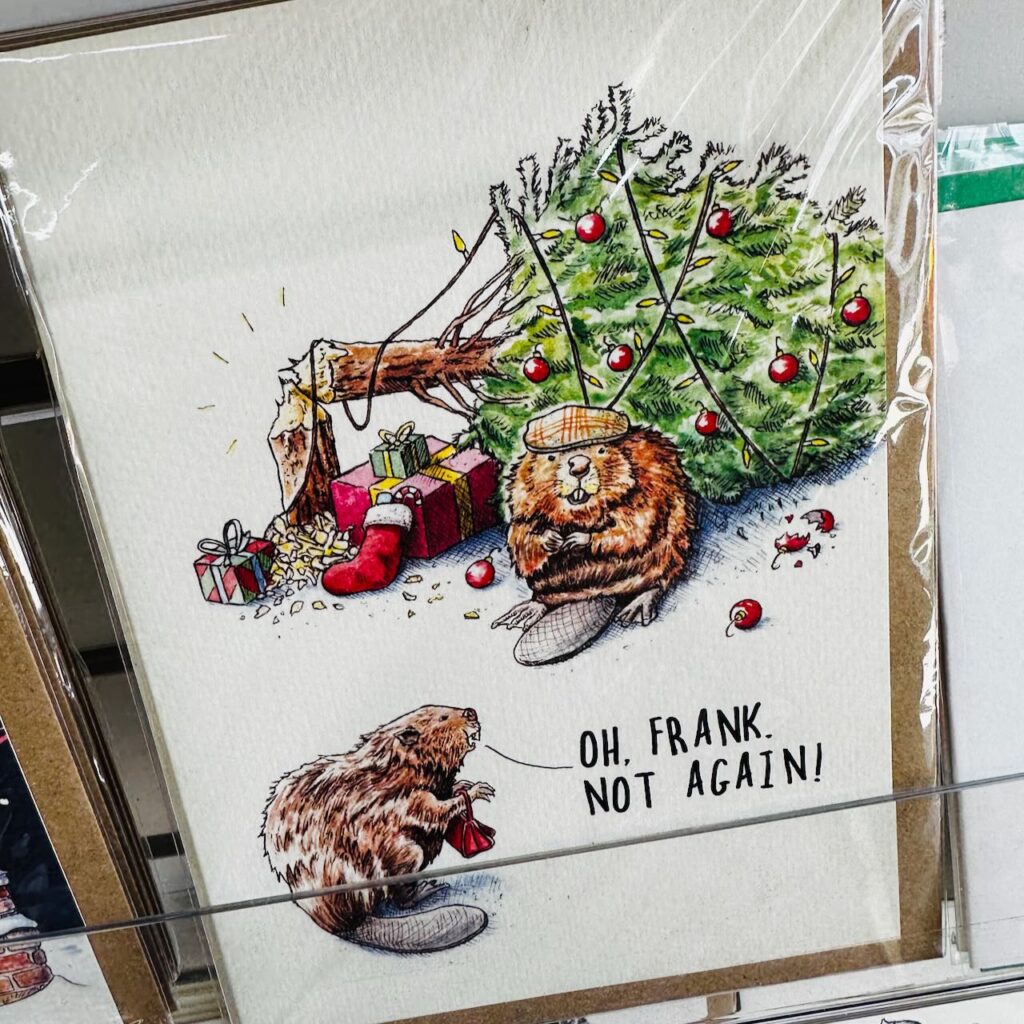
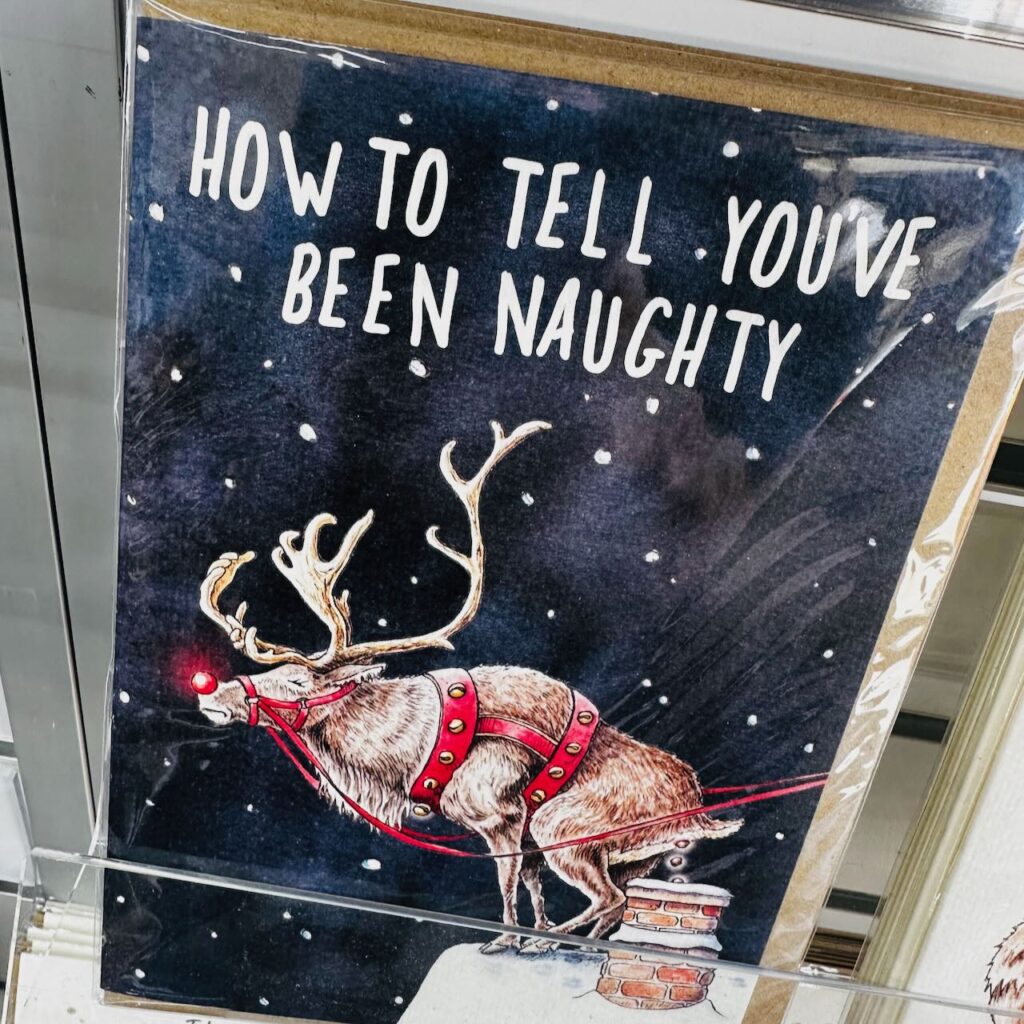
We started playing in this space two years ago and it’s grown since, without any negative imp[act on traditional card sales. We play in this space all year round now and it’s delivered more than $15,000 in additional card revenue this year.
I saw The Lottery Office being promoted on a huge billboard at Essendon Fields in Melbourne a few days ago, promoting huge jackpots. Going to their website they are pitching prices bigger than current Australian lottery jackpots.
I recall politicians saying they would ask on overseas lotteries being promoted in Australia yet here is The Lottery Office as big as ever, representing their global ownership.
The Lottery Office is Australia’s ticket to the world’s largest official lotteries.
The Lottery Office, established in 2018, is fully Australian owned and operated, licensed and regulated by the Northern Territory Government of Australia. With its Head Office in the Northern Territory and a Service Office in Gold Coast Queensland, The Lottery Office is a market leader in the global lottery industry making it the smartest way to play online with real tickets, no bets.
The Lottery Office operates under the parent company Global Players Network Pty Ltd, licensed and operating in Australia since 2003. The lottery draws and business systems are continuously audited by the Northern Territory regulator with regular processes and financial reviews.
While Lottoland may have retreated from this ‘betting’ space, The Lottery Office has not. Theirs is not a betting pitch like Lottoland.
When a player purchases a lotto ticket online in one of The Lottery Office’s official Government licensed lotteries, The Lottery Office purchases a matching ticket with the same numbers in an overseas draw. In the event of a win, The Lottery Office collects the prize amount*, and then pays the winner the exact same amount collected, guaranteed!
If I was a lottery retailer with The Lott, and gee I am glad I am not, I’d be angry at what The Lottery Office is doing since it is expensive to be a franchisee for The Lott.
80 newsXpress retailers participated in the launch of the $2 coin Anniversary set release with the Royal Australian Mint. The $235.00 collection sold out in under a day.
Total sales = $1,010,500.
80 stores participated in the opportunity. While some took way more than others, the smallest did $10,000 in sales and achieved close to $3,500 in GP. There were newsXpress stores with shoppers queued out the front from 4am. The phones rang hot and emails poured in. While the traffic spike was challenging, the easy revenue was wonderful.
All of this for no risk, and the invoice for stock will not be due until February 2024.
The actual value of the release is greater given what else shoppers buying the coin set purchased and how many of those will return to the now discovered newsXpress businesses.
This is a terrific good news story, and example of a new revenue stream for newsagents brought to the channel by newsXpress.
This latest coin drop is one of many in 2023 from which participating newsXpress members have benefited in terms of revenue, new in-store shopper traffic generation and online sales for those with websites.
newsXpress is sourcing for its members not only coins from the Royal Australian Mint but also Perth Mint, NZ Mint and the UK Mint. Coin collectors, especially those in regional and rural Australia, are loving easier access to mint coin releases.
Coin collectors are wonderful customers to attract. They are loyal, and they purchase other items.
newsXpress is a marketing group that helps newsagents transform their businesses to be more relevant in-store and online serving shoppers today, to attract new shoppers and to run lean.
Nothing newsXpress pitches is mandatory. As you can see from the success with this latest coin release, it is easy for newsXpress members to profit well from opportunities newsXpress brings to the table. This is what a good newsagency marketing group offers.
While newsXpress works with traditional newsagency suppliers, the majority of its supplier relationships are outside what has been traditional for the channel and outside what other newsagency groups offer.
The 2024 calendar is already filling with con releases and other shopper-attracting opportunities for newsXpress members. The goal is simple: to help local newsXpress members run more enjoyable and valuable businesses.
Disclosure: I am a director of newsXpress.
The Australian Financial Review did not arrive at the newsagency a couple of days ago.
We let the distributor know, and gave them the number of the shop for contact.
An hour later, someone from the distributor called a different number, a mobile for someone not at the shop and not listed as a contact, to advise they didn’t;lt know what happened, there were no spare copies and that we would have to lodge a credit request with the publisher and not them.
To put in the credit request we have to log in to the publisher portal and put in a claim.
What a broken process and waste of time. It should have all been dealt with in one call or, better still, notification via a distributor website rather than what happened.



So out of date.
So, yeah, this is another example of newspaper publishers using poor business practices to steal time from newsagents.
A modest investment in technology could improve this situation considerably. It would save time in newsagencies and help them improve customer service. I expect it would save time in newspaper distribution businesses too.
People are loving how Christmas flows deep into this shop in suburban Melbourne. The manager of the store has done a wonderful job delivering a true treasure hunt experience. From the moment you step into the shop you have options.
This is my shop in Mount Waverley. I am so grateful for what christ has created.
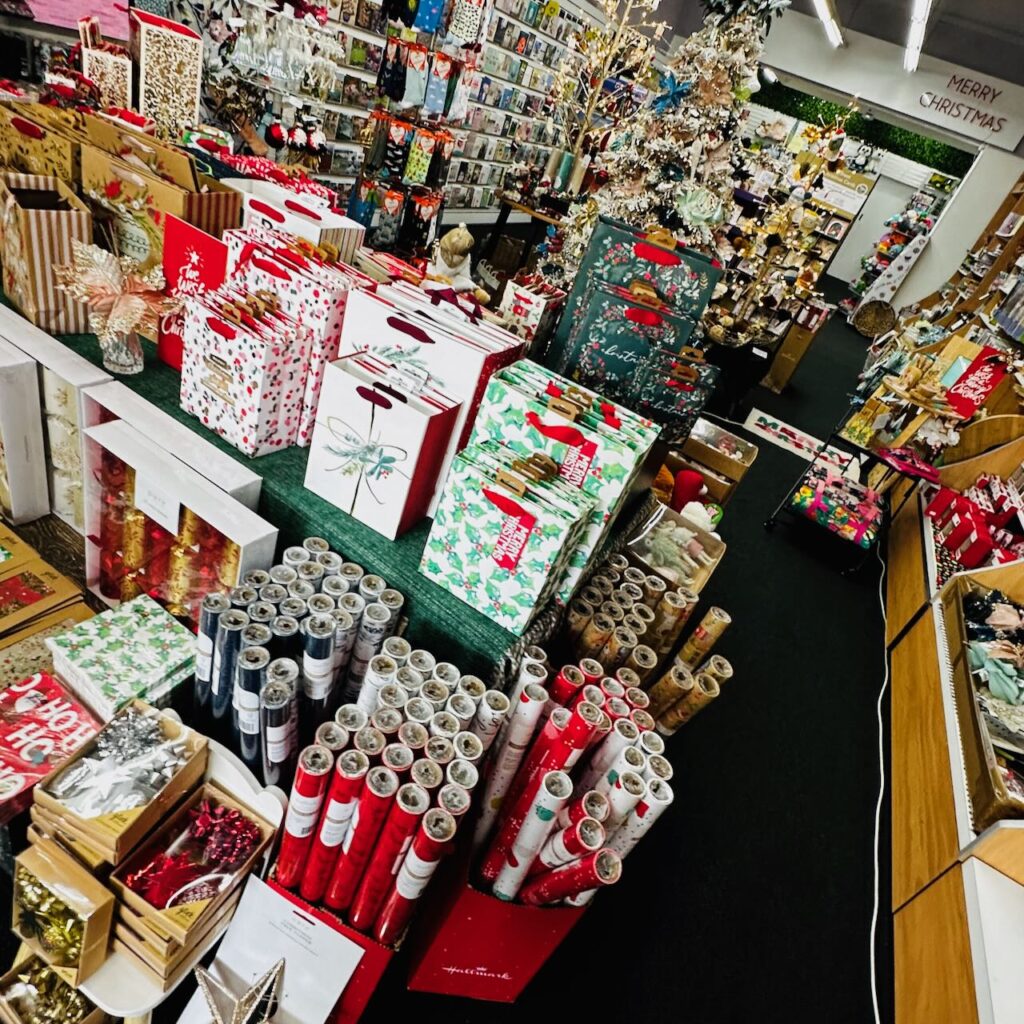
The photos do not do justice to the ease of shopping and the inviting experience.

I love how he has used multiple trees for visual merchandising dining. We know that if shoppers can see a outcome they are more likely to purchase.
Over on the left wall you can see our full face card wall. This is our third iteration of this approach to card retailing and it is working a treat.
A key goal in this shop is to welcome shoppers into a happy and friendly space. We know from shopper feedback that they appreciate it.
If you’re in retail, I hope Christmas is tracking well for you.
'Channel 1' just revealed their new AI news anchors.
All avatars and voice in this video is AI-generated.
With AI video tech improving week over week- the line between what's real and AI-generated is only going to continue to blur. pic.twitter.com/eLTaoIe1i7
— Rowan Cheung (@rowancheung) December 13, 2023
It seems more sales that Afterpay makes – the more challenging financially it is for the company: Revenue $2Bn (From $43Bn transactions) – Merchant fees $1.65Bn – Late fees $211Million (Up from $87Million) Net Loss $615Million Bad debts $475Million.
The recent launch of the AfterPay credit card and the clean out of the merchant and customer books will mean that AfterPay will look very different in 2024. It is expected to evolve into a more traditional consumer lending business with Buy Now – Pay Later being merely a feature.
Zip Pay has a big challenge in that it has to refinance $1.76B in debt next year and commentators say this will be a challenge for them. This article from 2 days ago is worth reading: https://www.bankingday.com/zip-refinancing-burden
So much for disrupting credit cards.
Meanwhile, LayBy continues to be available from many local retail businesses. It is easy to manage in the software and can help people purchase from you within a cashflow budget.
The challenge with LayBy is that the purchase can be easily cancelled. But that is manageable if you factor it into your forecasting.
Through my software company I know of many retailers offering LayBy with terrific success. There are some doing thousands of LayBy transactions each year.
LayBy setup and management is easy, structured, dependable. While there is state / territory based legislation to follow, the business you can win makes offering LayBy worthwhile.
LayBy is another way local small business retailers can differentiate their businesses from big business competitors.
Given the continuing noise in the media about the economy, offering LayBy could be a a response from your business that resonates with some.
My advice is to ensure you have your processes down and your rules in place, and that they sit within the regulations for your jurisdiction. Consider a LayBy establishment fee. This can qualify the participants. What you do here depends of the products you offer and the margin with you operate.
If you compare LayBy with Buy Now Pay Later offers from AfterPay and Zip, it can look good for you.
Do your homework and see if LayBy could be good for your customers and for your business.
The IR reforms passed by federal parliament give small business owners an opportunity overlooked in much of the commentary in the media. They impose requirements on big business that take away advantages they have leveraged for years. The reduce competitive advantages of big businesses in some areas.
While we in small business, especially in retail, have had the award as our guide, plenty of big business competitors have negotiated agreements that lower their labour operating costs.
The reforms passed, as I read them, reduce the opportunity for this. Click here to see the comprehensive explanatory memorandum.
Also, since many small business retailers have fewer than 15 employees, they are not obligated under some of the changes.
Too much of the media coverage has regurgitated talking points from lobby groups, like the Australian Industry Group, Australian Retailers Association, Australian Energy Producers, Master Builders Australia, Minerals Council and some others representing big business. I don’t feel any affinity with these organisations.
If you go to the source materials on the Parliament website you can read the specifics and form your own opinion.
While there will be concern around changes relating to casuals, I think the changes are ok, fair.
COSBOA, an organisation that claims to support small business, was party to a statement Friday that included:
In addition, the changes to labour hire, also rushed through, will increase costs and complexity for business.
This will hit many small businesses and drive up prices, risk jobs and comes at a time when there are already many pressures on the economy.
I am not aware of any small business retailers who use a labour hire firm.
I can’t see anything in the changes that will drive up prices in small business retail.
I can’t see anything in the reforms that will put jobs at risk.
The changes were not rushed through. They have been on the books for months.
I get that representative organisations need to reflect the wishes of their members and be seen to be doing something. The joint statement from COSBOA and others on Friday reads to me a shouty and lacking detail, being worried for the sake of being worried.
How big businesses have used labour hire arrangements to circumvent awards is problematic I think. It has provided labour at a lower cost, disadvantaging small business competitors who did not enter into such arrangements.
Some media reports and commentators and others have complained that there was no consultation. A quick search online shows that the changes were forecast months ago. Submissions were sought and consultation opportunities were available.
From a small business perspective, if you have less than 15 employees, you’re unlikely to be impacted. If you pay according to the award, you’re unlikely to be impacted. The most contentious issue will be if a casual wants to transition to a more permanent arrangement. It you appreciate them, it’s a good think I think.
But let’s go back to the topic of labour hire arrangements by big businesses. This is about containing the cost of labour to maximise business profit. I’d rather employees have more money in their pockets than the big businesses they work for as the employees are more likely to spend their money in ways that local small business retailers benefit.
My advice to anyone who may think they have an opinion about the IR reforms, read the source material and form your own views on that rather than taking what you read from a news outlet.
I am grateful for the opportunity to see the Christmas window displays at Galeries Lafayette in Paris last week while there for a retail tech innovation conference. Here are some of the many highlights on show at this stuffing retail business.



These displays caught my attention, as any good window display should.
Travel is wonderful for broadening your horizons. This is especially true when looking at retail in Europe. Their aesthetic is quite different to what is common in Australia.
While the videos and photos I have shared here are from a large department store, in local indie retail I saw some excellent window displays and shop floor promotions.
Newsagents selling the Taylor magazine from News Corp from this Saturday, December 9, for $9.95 make just 10% out of which we have to cover labour, retail space, EFTPOS and theft costs.
Depending on the payment method, newsagents can lose between 1% and 6% of a purchase price in fees. At the high end it would leave 39.8 cents, 4%, from which to cover labour and theft.
Labour on circulation products sits, on average, at 12% of overall revenue and theft sits at somewhere between 3% and 5%.
The Taylor magazine will be loss making for plenty of newsagents. Thanks News Corp.
What News Corp. is doing here setting a 10% commission / gross profit percentage is disrespectful of local small business newsagents. It does not allow newsagents to even make a living wage from selling this title.
All of this from a company heavily invested in shouting (yelling) at the federal government about cost of living. Yet, here they are financially harming newsagents in terms of cost of living.
I wonder how Taylor Swift and her organisation feels about the financial arrangements imposed by News Corp on local small business newsagents and their use of her name and brand to do so.
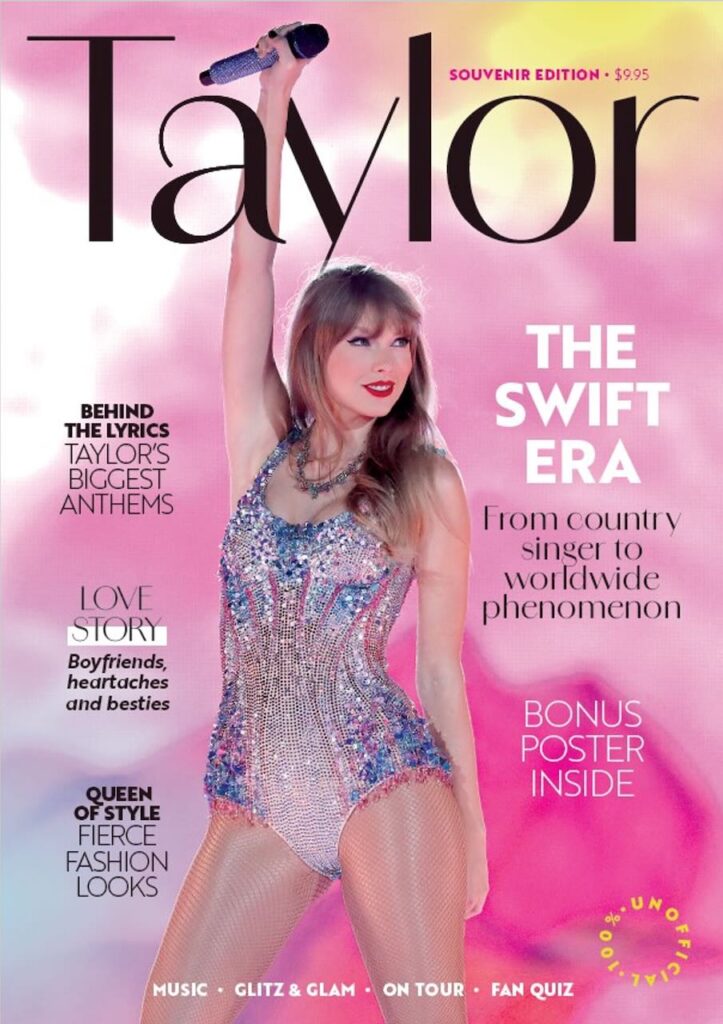
I am confident the News Corp. has it within its business capacity to treat local small newsagents more fairly with this Taylor Swift title. For a company so opinionated about others and their masthead commitment of we’re for you, their actions speak other words: selfish, uncaring and certainly not for local small business newsagents.
Their pitch to newsagents is gushing:
Taylor Swift fever has swept the globe during her epic Eras Tour, and now it is nearly time for Australia to bask in her glittering glory.
Celebrate the iconic singer with this special 100-page souvenir edition magazine with bonus poster inside.
Ahead of her concert dates in Melbourne and Sydney in February 2024, the Taylor magazine is packed with 100 glossy pages of details about the Eras Tour, the evolution of the singer from sweet country star to global sensation and a deep dive into her music.
Also in the souvenir edition magazine Taylor:
- Discover how big a Swiftie you are with our Taylor-made pop quiz
- The men (ahem, Travis Kelce, Harry Styles and Joe Alwyn please step forward) who have played a starring role in her life
- Her jaw-dropping red carpet fashion moments
- Plus, the records she has smashed as one of the world’s top entertainers
Taylor magazine is on sale from Saturday, December 9, for $9.95 at participating newsagents, Coles and Woolworths.
I wonder what the terms are for supermarkets Coles and Woolworths. While their margin may be the same, is News Corp. paying their a ranging or stocking fee, a promotion fee or offering some break in ad rates to compensate as I doubt that these supermarket giants would sell this for 10% only without any other financial benefit for them.
Taylor Swift has a track record of doing good where she travels and performs, helping local charities. her generosity has been well documented. If only News Corp. seeking to profit from Taylor’s fame was even modestly generous to local small business newsagents when it comes to the sale of this special Taylor magazine.
News. Corp is treating newsagents as if it is the 1950s. It is disrespectful. It demonstrates a lack of care for our channel.
If News Corp did care about newsagents they would offer this product at a considerably better margin.
It looks like it. I went to an online b2b trading portal on the weekend and was able to view product, add it to a cart and pay. I didn’t;t pay, of course – I was interested to see how far the transaction might go.

The page from which I can access 3,164 For Arts Sake products looks and feels like the For Arts Sake that sold to newsagents for years before being wound up in August this year following a creditor petition.
From that same page I could access more about the business.

Now, it could be that the listing at the b2b portal is old, but that would be out of character for the proactive portal, especially given that the For Arts Sake business was liquidated months ago.
If the listing is current, and stock available under this brand, it’s a resurrection to match that of Lazarus.
The advice in this post was written for and shared with newsXpress members last year. newsXpress regularly provides tactical business advice to its members.
I shared this advice with ALNA a few months ago, so they could share it with their members. I share again here today to reach more newsagents.
This is free advice that costs nothing to implement and is likely to attract shoppers to your business.
Research by several organisations in Australia suggest that more that 75% of in-store purchases include at least one online search. Having a current Google Business Profile is one key element in being found online.
Having an up to date Google profile is more important than ever. Google uses profile content to deliver search results.
Google‘s own data indicate that 46% of all searches have local intent. Use of Google Maps is common by people looking for something right now. Maintaining your Google My Business profile is the most important step to indexing well in local search and map results.
Google preferences Google My Business content in providing search results since it is verified content.
Sharing posts via Google My Business is possibly more important than what you share on social media.
Okay, so where do you start, what do you have to do? Here’s a simple to follow list. I have done this over the last few days for 2 of my businesses to ensure the advice is current.
Once you have done this, you should see the profile and post online in less than a day. Once that happens, the Google door is open for you.
Our advice is that you add a post at least weekly. Each post should be about a single product or single brand, something people are likely searching for. Keep the focus narrow. Write as you. Be relaxed. What is it you love about the product? Who is it for? Be grateful about having it available.
If you are just starting, consider a post a day for the first two weeks to get your content up and running, to encourage Google to notice you.
On the posts themselves, they should be more informative than, say, an Instagram post. remember, you are writing for people on their phones searching.
Google will preference profiles that offer fresh content. This is why I say posting weekly is important.
Your Google business profile works best for you when you have a website as that facilitates shopper browsing.
The other benefit of creating and maintaining a Google business profile that reflects your businesstoday is that suppliers will see it. This could help suppliers who pigeonhole you as a newsagency realise that you are not.
We appreciate some of you may have read this and thought it’s the last thing I need – more work to do. The thing is, more shoppers today search online than not.
Footnote: if you are thinking of paying someone to do this for you, I advise against that. This is your business. You know what you want people to find, and buy. A marketer or a friend will do more of what they want, and that may not match what you and your business need.
Now, we asked ourselves some questions for you:
Of course, it’s up to you if you create a profile for your business. It costs nothing and is likely to help people find you, and visit.
Didcuver Chichester’s independent stores brimming with perfect gifts for kids including Whirligig Toy Shop, Kids Stuff Toys and The Sweet Jar all on South Street, Cloth Kits on The Hornet and Good News Newsagents on St Martin’s. Happy shopping!🎄🎁🎅☃️❄️🎎🧸🧚 pic.twitter.com/kjnVOrOE4X
— ChichesterBID (@ChichesterBID) November 28, 2023
Futurism has this most incredible story. Here’s part of it:
Sports Illustrated Published Articles by Fake, AI-Generated Writers
We asked them about it — and they deleted everything.
There was nothing in Drew Ortiz’s author biography at Sports Illustrated to suggest that he was anything other than human.
“Drew has spent much of his life outdoors, and is excited to guide you through his never-ending list of the best products to keep you from falling to the perils of nature,” it read. “Nowadays, there is rarely a weekend that goes by where Drew isn’t out camping, hiking, or just back on his parents’ farm.”
The only problem? Outside of Sports Illustrated, Drew Ortiz doesn’t seem to exist. He has no social media presence and no publishing history. And even more strangely, his profile photo on Sports Illustrated is for sale on a website that sells AI-generated headshots, where he’s described as “neutral white young-adult male with short brown hair and blue eyes.”
Ortiz isn’t the only AI-generated author published by Sports Illustrated, according to a person involved with the creation of the content who asked to be kept anonymous to protect them from professional repercussions.
Read the rest of the article if you’re interested in magazines, AI, journalism and business ethics.
This is brazen stuff being reported from making up fake AI journalists / writers, claiming they are real and then deleting them when asked and offering no comment, editorial note, or other response.
All publishers should follow this story.
You know the posts on social media I mean here, the ones reminding people about the importance of shopping local. They often clumsily pressure people to shop local, as if that matters more than other factors.If you pitch shop local on social media, be ready to demonstrate your local credentials with locally sourced product.
If you do this, use social media to tell people to shop local, this is for you.
Do you source locally for your business every opportunity you have? I look at product source hone in a business that tells me to shop local. I did this recently in a clothing shop and not one of the 25 items I checked was sourced from within Australia. So, or their business, shop local looked particularly selfish in my view.
Now, local could be made in town, in your state or in your country depending on the type of product.
It is vital that everyone in the business knows where you source your products. Being able to share information about genuinely locally made products can help you win sales.
If you have products from several suppliers, location source could be a differentiating factor. Knowing the location and pitching this could win business.
When you do source locally, ensure everyone in the business knows, and that your shoppers know. Use signage to remind shoppers. Smart suppliers help you with this pitch.
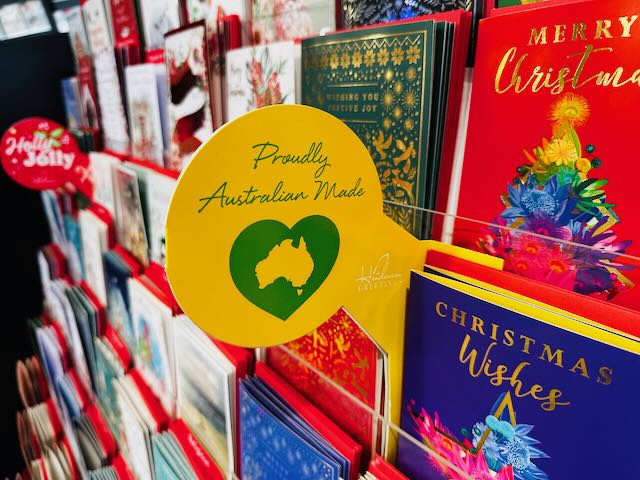
In good economic times and bad, locally made has remained a constant. We know from research that this is especially true among younger shoppers.
So, be sure of the source of what you sell and leverage this when possible to reinforce the localness of your business.
Shop local has a place in local indie retail promotion if it is supported by sourcing decisions within the business. This is where you can be active in your decision making and supportive in-store with backing-up your shop local pitch with proof of your own actions.
It’s not enough to leverage a social responsibility without demonstration your engagement with it. It’s hard work, challenging, but worth it if you commit to walking the walk.
It is frustrating reading about a newsagent who has closed their business having sold the building to a developer who bags the channel they are leaving.
Newsagents are dying.
This quote is from Des Higginbotham, the owner of the now closed Ferntree Gully Newsagency in an article the local paper, the Star Mail. Here are some other quotes from Des:
“Newsagencies have changed a lot over the years.
“Ever since they took the newspaper distribution away from us, it changed the whole dynamic.
“We lost a lot of traffic flow, and a lot of cash flow – we used to give tasty trucks 1200 suns a day, with serious money!”
“Newsagents are dying, if it hadn’t been for tax lotto wouldn’t have survived,” he said.
While this may be Des’ experience, there are plenty in the channel who would disagree.
I know of newsagents who felt relief at quitting the distribution side of their business and relishing being focussed 100% on being retailers.
There are newsagents enjoying double digit growth in 2023 over a good 2022.
Sure, there are those in struggling businesses. In many cases this has to do with lack of embrace of change, lack of reaching outside the local area for shoppers. Those challenged today tend to still have the mindset of being agents rather than retailers. Suppliers have a bit to answer for with this.
I wish Des and Linda all the best. Hopefully, they will not talk down our channel any more. Maybe in retirement they could visit newsagencies near where they had their shop and see thriving and relevant businesses in action.
Every newsagent is responsible for their business.
Being a victim is unhelpful.
It is never too late to embrace change.
The biggest growth opportunities for our channel are product that deliver 50% and more gross profit opportunities. Some of these are outside what is traditional for our types of businesses. They help us attract new shoppers.
This is a fun space in which to play. But if you cling to an agent mentality like Des appears to have, you’re unlikely to see these opportunities.
It is disappointing that media outlets give voice to views that reflect on our channel as it was 20+ years ago as if those views are relevant today. All of us in newsagency businesses today should call this old-school view out and talk about the reality of where we are at today, the new opportunities that are working for us.
Stock in boxes in the back room, in a garage or under tables in the shop will not sell unless it is displayed.
While this will be obvious to most, there are some retailers who don’t get it.
If you do have stock in boxes and no room to display it, consider pausing spending to give you time to convert those purchases to cash.
The alternative is that you do nothing, and your ability to pay bills is impacted.
It’s your business. You choose when to spend and when to not spend.
Some retailers buy friendship through their purchasing. Others like to look busy with a shop bursting with stock. Others buy to feel better about themselves. Spending for any of these wrong is not helpful to the business, not helpful top you.
There are sales reps who would know they are selling stock to a business that does not need it. Shame on them. Shame on them putting their own financial rewards ahead of the evidence of an overstocked and financially stressed business. Sales people doing this are no friend of the business owner.
If you don’t know the current value of the stock in your business, it’s likely you have too much stock.
So, what’s the value of your current stock on hand?
If the value of your non circulation product (magazines and newspapers) stock right now is more than 20% of the total revenue you will make from it in a year, you probably have too much stock. The actual percentage will vary by product category.
There will be some who say the 20% figure is inaccurate and unhelpful. I have tested it in a few businesses and it is a reasonable first step guide.
So, what’s the value of your current stock on hand? Start there. Then look at your non circulation product revenue for the last year. The numbers will support what you currently see in your shop.
If you have boxes of stock that you’ve not opened for six months or more, you have too much stock. If your back room, garage and or under display table space is filled with boxes you have a problem.
The best way to address being overstocked is to stop buying and sell down what you have, and to do so without emotion.
The alternative is that you do not address the issue and the issue swamps you and your business.
It’s black and white – in your numbers and in your business.
Another reason to not consider the Herald Sun a trustworthy news outlet.
“But therein lies the success of the original Herald Sun story: finding a morsel of gossip which then took on a life of its own, generating, by our count, more than 50 media stories.” #MediaWatch pic.twitter.com/GASBsSX1QH
— Media Watch (@ABCmediawatch) November 20, 2023
This, from May 30, 1999. It’s a speech delivered by then Minister for Financial Services and Regulation Joe Hockey. Here it is in its entirety:
Address to the Australian Newsagents’ Federation Industry Conference, Gold Coast
Good morning ladies and gentlemen and thank you to Bob Dean and the entire ANF board for inviting me to speak at your national conference, here in Surfers Paradise.
It has been an eventful six months for everyone involved in the newsagent industry. During this time, the industry’s future has at times seemed clouded and the way forward unclear.
In fact, for the past 20 years your industry has persevered under uncertain conditions.
But I am confident that we have reached a sound commercial solution to a situation that at one stage looked vexed and complicated.
So, now it is a good time to examine where we are, and importantly, how we got there.
I should say, that over this period, the ANF board has provided outstanding leadership to its members and remained focused on the issues needing to be thrashed out.
They have responded thoughtfully to the changes in the industry and represented – very robustly – the interests of members, and importantly, kept a keen eye on the future.
In particular, I would like to mention Bob Dean’s diligence in this whole process. His efforts have been outstanding continually travelling the country to represent his members in more than 80 meetings over the last 6 months.
Bob has ensured that the industry has approached the issue in a positive way.
This is evidenced by the QNF conference in March. I understand that the conference was very well attended and that it was a most productive forum.
Indeed, the positive attitude of newsagents, wanting to seize the opportunity to improve all aspects of the industry and ensure your future, is to be commended.
And now, after a solid 6 months of consultation, a competitive and equitable system, with greater freedom and greater flexibility for newsagents to manage their businesses with confidence, appears to be within reach.
As you all know, the need to consider the industry’s commercial framework had its genesis in the decision last November of the Australian Competition Tribunal.
In this case, the Tribunal found that aspects of the newsagency systems in NSW, the ACT, Victoria and Queensland no longer satisfied the public benefit test as required by the Trade Practices Act.
That is, the anti-competitive effects of the distribution systems outweighed the benefit to the public.
This meant that recently granted authorisations only protected arrangements preventing direct supply of magazines to sub-agents and direct supply of newspapers to ‘look-alikes’ until 1 July this year, and the direct supply of newspapers to sub-agents until 1 February 2000.
This was a time frame which the Government was very aware would concern many newsagents.
But we were also very aware that there needed to be an outcome that benefited newsagents, that benefited publishers and, very importantly, that benefited consumers.
From the outset, the Government was entirely sympathetic to the newsagents’ concerns and committed to the continuation of home delivery.
Indeed, we have been, historically, supportive of the industry over a number of years.
But the Tribunal’s decision was in keeping with the Government’s position on home delivery the principal public benefit claimed for the system.
In 1996 delivering on its election commitment the Government made a submission to the ACCC supporting the extension for another 4 years of the authorisation protecting the reliable, efficient and low-cost home delivery service for newspapers.
The ACCC and Tribunal adopted this time frame to make sure the industry had enough time to reform its arrangements.
I should emphasise that the ACCC and Tribunal are independent and not subject to any direction from the Government.
I should also emphasise that these arrangements between newsagents and publishers are private sector contracts, and as such, are totally at arm’s length from Government.
In other words, there’s not a lot a government could, or should, do.
It will always be up to any industry to change over time after all, as the Tribunal found the newsagency industry’s conduct, but for the ACCC’s authorisation, would have been in breach of the Trade Practices Act.
And while that is the case, the Government has always been very willing to help the industry make positive changes.
In the light of the first Tribunal decision in 1994 requiring reform and the decision last November, and in order to seek a way forward, I asked the ACCC to consult between industry groups and to report back by 15 February this year. This was then extended to 31 March.
In early April I announced that as the report contained commercially sensitive material it would not be publicly released.
Following this, on April 20 after an application from the Australian Newsagents Federation, the ACCC granted an interim authorisation to the Federation allowing it to negotiate with publishers and distributors on behalf of newsagents.
I believe this was granted to allow the industry to build on the momentum which had been generated by the earlier discussions, and to provide individual newsagents with the industrial power of collective bargaining which is required during times of change.
For individual newsagents, this means they will be protected during contractual negotiations.
Ladies and gentlemen, the entire process has been intense and exhaustive, but a process which could not have happened without the help of the ACCC, and in particular, the good work ACCC Commissioner Sitesh Bhojani, who personally participated in over 60 industry discussions.
But this was not a typical role for the ACCC.
It had no official duties to complete. Rather, the ACCC acted as voluntary facilitator, smoothing and lubricating the consultative process.
Indeed, despite being set a difficult task by Parliament to protect and promote competition, the ACCC devoted a huge amount of time and resources to facilitate genuine industry discussions for the newsagency system.
And as such, apart from impressing upon all parties the importance of frank and honest dialogue, the Government has stayed very much at arm’s length – not engaging in negotiations on behalf of any side.
We have had no direct involvement, because we believe it is not for the Government to determine the operations of markets.
But we have had a role to play.
You asked me to help bring the publishers genuinely to the negotiating table.
I did that.
You asked me to help create an environment where newsagents will not have the ACCC constantly looking over their shoulder.
I did that.
You asked me to extend the consultation period.
I did that.
And you asked me to help newsagents to collectively bargain during this time of change.
And I did that, too.
And, as a result, we fully support your preference for commercial contracts, as has been spelt out in the May edition of your industry journal, National Newsagent.
So where is the industry heading?
While I have not seen any contracts, I know that newsagents are being offered greater freedom and greater flexibility to shape their business as they choose.
For example, those newsagents who are now compelled to provide home delivery even where the delivery is at a loss, may have the option of selling-off this unprofitable side of the business.
I can well understand the frustration of a newsagent, awake at 5am, working through the morning and attending to a lunchtime rush, when a disgruntled home-delivery customer fronts up to complain about the plastic wrapping on their paper.
Now, the competitive framework that has been worked out should see the innovative newsagents thrive, with benefits to consumers including an even better home delivery system.
Newsagents will have more scope to manage their business, with the ability to shed unprofitable aspects.
There is no reason why any newsagents would be forced to close.
Very importantly, the Government has met its election commitment to preserve newspaper home delivery.
As a result, Australians can now be assured of continued delivery of their morning papers, while newsagents can be assured of a more certain environment in which to conduct their business.
In other words, newsagents are being given choice.
You are being given the choice to run your businesses in a more certain environment, and importantly, you are being given the choice of how you will adapt to your changing business environment.
The future is what we make of it.
The Government cannot guarantee any individual business or industry, but we have created a business environment of strong economic growth, with low inflation, strong consumer demand and low interest rates.
Ladies and gentlemen, in the face of rapidly changing uses of technology, I think this new commercial structure is a solid foundation for the future.
It is a structure, which will benefit Australia’s newsagents, and it is a structure, which will benefit Australia’s consumers.
And so it is a structure, which we would all do well to support.
…
Hockey was a politician. There will be some from our channel back then who will disagree with his take on what the government did and didn’t do for newsagents, and some who disagree with what the ANF at that time did or did not do for newsagents. In my opinion, newsagents were not well represented through the changes driven by the Howard government. Much was taken from us without compensation. We were ineffective in achieving a fair outcome for the thousands of family owned and run businesses. The government, which was elected as caring about small business, and newsagents in particular, failed our channel.